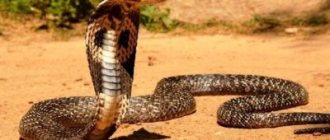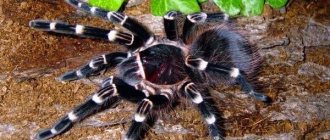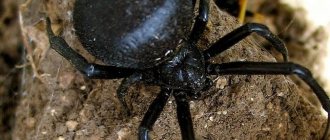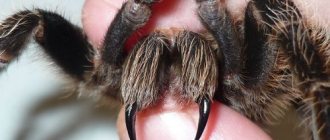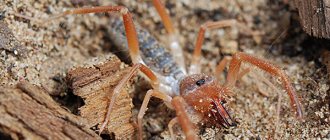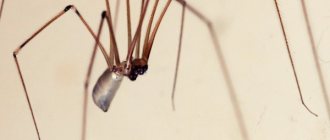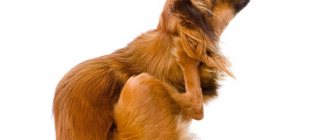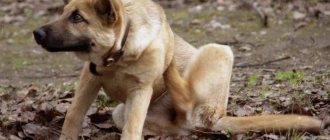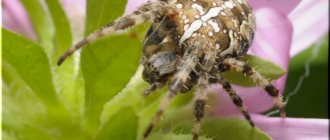Welcome to the world of the most dangerous spiders. The ancestors of spiders (Araneae) lived on our planet more than several hundred million years ago. By the way, modern spiders in their genetic portrait are related to crabs. And today, just imagine, almost four tens of thousands of species are known. By the way, for those who don’t know, spiders are not insects. They form a separate order, and accordingly a separate class of animals.
These creatures live everywhere, even in water. As a rule, they have eight legs, a pair or even several eyes, and the forelimbs are called chelicerae. At their tips are miniature claws, which the predator plunges into the body of its prey, after which it injects saliva into it through the mandibles, which has the property of turning the tissues of living creatures into jelly. After such gastronomic preparations, the spider simply drinks the victim.
Fortunately, spiders prefer insects and small animals. Representatives of the entire class are poisonous, but people should only beware of meeting certain species. They will be discussed in this article.
List of the most dangerous spiders in the world:
1
Brazilian spider soldier / Phoneutria
Aggressive, fast and poisonous creatures. Known as armed or banana spiders. By the way, the name is associated with the animal’s ability to do without a web. These spiders just don't weave it. Moreover, they are nomads and do not stay anywhere for long. This travel spider can be found not only in tropical forests, but also in huts and other dwellings.
Favorite hiding places in the house are dishes, clothes and shoes. So, if you are planning to visit Brazil, be sure to make sure that there is no such “guest” in your shoes or bed. After all, its bite is very dangerous for humans. A bite can kill a person with a weakened immune system within 10 minutes. If an antidote is not administered within 20–30 minutes, even an adult and healthy man can die from the bite.
By the way, on our website topcafe.su there is a fascinating article about the most poisonous insects on the planet.
2
funnel web spider
Funnel web spiders are distributed throughout the world, there are more than 500 species. For the most part, the bites of these spiders do not have serious consequences for humans, but some species can pose a serious danger.
In the photo: Sydney leukoweb spider / Atrax robustus.
So, for example, the bite of a Sydney leucoweb spider can instantly kill a child, while an adult will suffer for no more than 15 minutes... Death occurs due to intoxication of the body and irreversible damage to the central nervous system. Primates can also suffer from a bite, while other mammals may not worry - the venom of the funnel-web spider does not have lethal properties for them and can only cause a slight illness.
Black Widow
In the photo: a female black widow guards a egg cocoon.
The bite of Latrodectus mactans poses a serious danger to humans. These creatures are also unkind to their relatives. So, for example, females eat males after mating, hence the name - widow. Moreover, the poison is more toxic in females.
This type of spider also belongs to the genus of the same name, which has 31 species. Not all types of black widows are dangerous.
They often crawl into people's houses in search of a more comfortable place for a brood of spiderlings. The female guarding the egg cocoon is very aggressive. She can easily bite anyone who invades her territory. Once in the human body, the poison provokes convulsive muscle contractions. And before the invention of the antidote, about 5% of people bitten by a black widow died.
Yes, and the male sometimes manages to escape from the female after mating!
5
Karakurt
It can easily be confused with a black widow due to its external resemblance. But Latrodectus tredecimguttatus is still larger in size. They prefer to avoid living near human habitations and are distinguished by their peaceful disposition. They attack only when they are disturbed. And this is not an attack, but self-defense. Large horned animals often become victims of this species. Latrodectus tredecimguttatus has been known to bite people. There have even been cases of fatal bites.
The bite of the karakurt is very painful. The victim feels a sharp pain and burning sensation. And after 10–15 minutes, when the poison spreads throughout the body, people begin to experience pain in the lower back, abdominal area or chest. All this is often accompanied by headaches, shortness of breath and vomiting.
I wonder how the person in the photo is not afraid to hold this dangerous karakurt? Maybe he's holding a dead spider?
6
Jackal
The character of Jackal is another one of those science mistakes that are so popular in the Spider-Man storyline. We met him in The Amazing Spider-Man Vol. 1 #3 as Miles Warren, a scientist specializing in genetics who has experimented for years creating animal-human hybrids. One of his monsters escaped, killing his family and revealing the atrocities the man had committed.
Trying to escape his past, he moved to another city and began a new life as a biology professor who taught at Peter Parker and Gwen Stacy's university. He strangely fell in love with Gwen, and after her death he blamed Spider-Man for everything and vowed revenge.
To do this, he decided to change his DNA and finally became El Chacal: a half-wolf, half-man with super speed, strength, heightened senses and regeneration.
Kraven the Hunter
Kraven was precisely the half-brother who gave Chameleon a difficult childhood. Kraven the Hunter , the full name he took in the comics, first appeared in The Amazing Spider-Man Vol. 1 #15.
The son of a wealthy family that was slowly losing everything he had, he had to make up for it by devoting himself to big game hunting. But the strange thing is that this hunter had a strange code of not using firearms under any circumstances.
Later, when he took a potion given to him by a sorcerer, he gained powers such as strength and enhanced senses to better develop his hunting work. The problem arose when he decided to go after more difficult trophies, such as Spider-Man himself.
Brown recluse spider
This not very attractive creature lives in the east of America. The bite of Loxosceles reclusa is dangerous for humans, since the venom contains substances that can cause necrosis of the subcutaneous tissue. Moreover, these spiders, it turns out, love to live next to people. They can be found behind paintings, baseboards, and in shoe boxes. In the wild, you can meet them under tree bark, in crevices or in burrows. Naturally, this meeting cannot be called friendly.
The bite of recluses is not fatal, although rare cases of death have occurred. Victims describe the moment of the bite as a faint feeling of a needle prick. Some people don't even notice the moment of the bite. But after some time, the poison begins to act, causing tissue necrosis near the bite site.
7
Tarantula
Belongs to the family of wolf spiders. The tarantula can be found anywhere it is warm and humid. Lycosa live for more than 30 years and are considered true centenarians. They feed on small mice, toads, and insects. The bites are very painful, but not fatal. Often in people bitten by tarantulas, the area near the bite site becomes yellow for several months.
Currently, more than 200 species of tarantulas are known. If you want, TopCafe will write an article about the most beautiful tarantulas. Write in the comments if you want to admire it.
8
Fish
Big tiger fish
The great tiger fish, also known as the giant hydrocine, is a very large, freshwater, predatory fish in the family Alestidae. It is found in the Congo River basin.
This predator grows up to 1.8 m in length and weighs 50 kg. Large tiger fish are ichthyophages, feeding on any fish they can handle, including smaller relatives.
Kalamoicht
Kalamoikht or snake fish, lives in West and Central Africa. Mainly found in freshwater lakes and rivers of Africa. The diet consists of small animals (insects and worms).
Kalamoikht reaches a maximum total length of 37 cm. It has an eel-like, elongated body without a ventral fin. The long dorsal fin consists of a number of well-separated spines. Kalamoicht has a pair of lungs, which allows it to breathe atmospheric air. This allows the fish to survive in water with low dissolved oxygen.
Yellow sac spider
Cheiracanthium punctorium lives in Europe, but it is not so easy to meet it, since it has a timid disposition and prefers to avoid random meetings with people. If he realizes that he has been discovered, he hides in the leaves. The venom of the yellow-sac spider is very dangerous and gradually affects the body. At first, the person experiences nausea and headache, then the condition worsens. Spiders do not attack people, but the latter can become victims through negligence. The bite is very painful, comparable to a stinging wasp. After a bite, even with the introduction of an antidote, long-term non-healing ulcers and wounds may remain on the skin.
9
White tail spider
Until recently, spiders were considered one of the most dangerous spiders; their bites left ulcers and wounds on the skin. But more recently it was discovered that white-tailed spiders... are not poisonous. True, some scientists still question the results of recent research. And there have not yet been any brave souls ready to test the toxicity of the bite.
In the photo: Australian Lee Porter
There is widespread material on the Internet about how the bite of a white-tailed spider greatly ruined the life of one Australian. After the bite, the young man developed a non-healing wound, which later developed into a tumor. As a result, doctors had to remove the tumor, which had spread to the Australian's eye.
10
Spider-Man from a scientific point of view
At the beginning of July, the next piece of the Marvel Cinematic Universe puzzle, Spider-Man: Homecoming, hit the big screens. Jon Watts' film is a reboot of the Peter Parker story. For the first time in the history of the comic book adaptation, Spiderman is a teenager who struggles not only with villains, but also with youthful insecurities. Everything else remained the same: climbing walls, webs from hands, super strength and super hearing, as well as endless fan debates about whether Spider-Man could exist in reality. Let's look at this issue from a scientific point of view.
Mutation
In the fictional world: Peter was bitten by a spider. After a short time, the guy discovered his superpowers. Because the spider was radioactive and its venom contained mutagenic substances.
From a scientific point of view: radiation, of course, can change DNA, but, firstly, it will not necessarily spread to all cells, and secondly, it is impossible to predict which of the 20 thousand genes it will affect. Mutation is a multi-stage process, which is why it is slow. Therefore, instead of superpower, Parker would be more likely to get a cancerous tumor. If, for example, radiation affected the genes “necessary” for Spiderman, then for the proper effect the spiders would have to bite Peter from head to toe.
Walking on steep walls
In the fictional world: Spiderman easily moves along vertical walls. Sticky limbs help him with this.
From a scientific point of view: in order to quickly move along steep walls, Spider-Man's body must be 40% sticky. Scientists, having studied geckos and ticks that can cling to surfaces, came to the conclusion that in real life, Spiderman would only be able to move along walls if he had huge feet and hands. For example, a superhero would have to wear size 145 shoes, as British and American scientists have calculated. Disproportionately huge limbs would make Spiderman look clumsy. A la acrobat would be out of the question.
Web
In the fictional world: Spiderman shoots a web far ahead, stops trains with it, and flies over the city with it.
From a scientific point of view: even movie spiders do not possess the skills that Peter Parker received after the mutation, as you can see by watching themed films. What can we say about spiders in nature! The ability to lift weights of 20 tons is no joke. Scientists have proven that if Spider-Man existed in reality, he would have to weave a web as thick as a cable - the only way it could cope with the enormous loads that comic book creators came up with. The thickness of the web that a spider weaves in nature is measured in microns. The web is only dangerous for insects that get caught in the web. Spiderman's ability to synthesize a large amount of web also raises questions: from a scientific point of view, this requires giant glands. But it is true that spiders can shoot webs over long distances. Seven years ago, Darwin's spiders were discovered in Madagascar, which shoot webs up to 25 meters and always hit the target.
"Spider Sense"
In the film: Spider-Man has phenomenally acute hearing. He also senses danger in advance - long before it becomes tangible.
From a scientific point of view: until recently, the “spider-sense” was considered a fiction - a kind of myth invented specifically for Spiderman. However, a couple of years ago, American scientists found that jumping spiders have a unique ability to hear low-frequency sounds within a radius of five meters. Arthropods owe this ability to the sensitivity of the hairs located on their paws. This “superpower” allows horses to predict danger - the approach of wasps that lay eggs in spiders. The hearing of horses is “tuned” to the vibration frequency of the wings of wasps. Perhaps this was the spider that bit young Parker? Although if phenomenal hearing requires special explanations, then the “sense” of danger can be attributed to well-developed intuition.
For those who want to know more
- Winter is coming: Game of Thrones inside and out
- How Autobots and Decepticons fight: 10 most powerful transformers weapons
- What does the Star Wars Universe consist of?
- All the mysteries and secrets of the Back to the Future trilogy
- Cyborg Killers: The Definitive Guide to Terminators
Mouse spider
Spiders were given such a strange name because of the mistaken belief that, like mice, they dig holes for themselves. The myth has dissipated, but the name remains. True, spiders are still related to mice. They feed on them, like other types of spiders. But nature tries to balance everything. Therefore, she turned mouse spiders into prey for wasps, scorpions and centipedes. The venom of these creatures is also toxic to humans, but, fortunately, these spiders do not like to live near human habitation.
Today, eleven species of these spiders are known, and all of them are endemic to the Australian continent.
11
Redback Spider Habitats.
Redback spiders are most often found in urban areas, preferring to take shelter from adverse weather conditions in a variety of indoor environments. They live in urban and suburban areas across all terrestrial biomes of Australia, preferring tropical and temperate climates. They are less common in savannas and desert areas and are not found in high mountain areas. The appearance of poisonous spiders in Japan suggests that they are also able to survive at very low temperatures (-3°C).
Hairy spider
A collective name that rather characterizes the spring feature of spiders than a specific species. However, a large hairy spider, regardless of its species, is already a cause for concern. A hairy spider already sounds disgusting!
If its venom is also toxic to humans, then it would be best to beware of encountering a large hairy spider. However, today more and more spiders are kept as pets. By creating comfortable living conditions for them, owners can observe the life of predators live.
As a rule, beautiful and spectacular photographs of hairy spiders depict tarantulas, tarantulas or jumping spiders.
12
Benefit or harm?
It is impossible to remember cases in which a six-eyed sand spider has benefited humans or
animal world. Apparently, only harm comes from him, since meeting him can only mean one outcome - fatal. And everything will depend only on the time required to kill the victim.
For nature and insects, this arachnid species can be called an instrument of natural selection, which eats weak, sickly and careless insects.
Spider baboon
One of the most poisonous and large spiders. Fortunately, it is not found in Russia, but lives in Tanzania, Uganda and Kenya. Spiders live in deep, up to 2 meters deep, burrows; the hind legs are much larger than the front ones. At the entrance to the hole, the spider spreads a web, which catches insects and small animals (even snakes). Hearing the vibration of the web when the victim is in it, the spider crawls out of the hole and starts eating. All that remains of the victim is its paws, because the predator is merciless.
13
Reproduction
Poisonous spiders reproduce in a rather specific way. The male finds the lady of his heart with the help of the olfactory organs located on the pedipalps (tentacles). The mating process occurs at night and lasts several minutes; The spider releases a sticky substance with spermatophores onto the soil surface, after which it picks it up with chelicerae and transports it into the female’s genital opening.
When mating, the male behaves reflexively; if you remove the female at this moment, the spider will not even notice it and will continue its actions, which have lost all meaning. During fertilization, the female is characterized by inert behavior; the male even has to drag her along with him. After intercourse, the lady, who was previously very passive, suddenly becomes aggressive and is even capable of eating the male, so it is better for the latter to get away as quickly as possible.
After some time, the female begins to build a burrow, into which she lays up to 200 eggs. Since the embryos begin to develop already in the female’s oviducts, after a couple of weeks small phalangeal spiders appear from the laid eggs, which until the first molt are devoid of articulation, covered with a transparent thin cuticle, and remain practically motionless. Afterwards, their newly formed integument hardens and dismembers, and hairs appear on the body. The female stays with the offspring until they become stronger. There are suggestions that she even provides them with food.
In winter, the camel spider hibernates; some have this feature even in the summer months.
Red-backed Australian Widow
Australia is home to many different poisonous and very dangerous animals. And spiders are no exception. The creatures' long and strong fangs are so powerful that they can bite not only human skin, but also a human nail. Spiders attack instantly, having previously performed a ritual dance and demonstrated their fangs. The victim is paralyzed not only by the poison, but also by fear of the dancing killer.
It is considered the most dangerous and poisonous resident of Australia. Its venom is filled with neurotoxins. When bitten, a person feels severe pain, from which even an antidote, which can only be purchased at your own expense, will not help. TopCafe does not want anyone to experience this for themselves.
14
Goliath tarantula
Are you afraid of spiders? After meeting this species, you will become even more afraid of them. Theraphosa blondi is also known as the tarantula spider or goliath tarantula. What does this monster look like? Adults can reach sizes of up to 25 centimeters, with legs measuring 15 centimeters long and body length 10 centimeters.
15
Birds
African white-crested kalao
The African white-crested kalao is one of the representatives of hornbills and lives in the humid forests of Central and Western Africa.
The body length ranges from 70-80 cm. The weight of the male is 279-315 g, the female - 276-288 g. The color of the head is white, with black spots, the rest of the plumage is black, with a metallic sheen. Only the tail feathers have white spots at the tips.
African brilliant teal
The African glossy teal, also known as the pygmy goose, is native to sub-Saharan Africa. This is the smallest game in Africa, and one of the smallest in the world (average weight is about 285 g, and the wingspan is 142-165 mm). Inhabits water bodies, feeding on aquatic vegetation and invertebrates.
Although African glossy teals have bills like geese, they are more closely related to dabbling ducks and other Anatidae. Feather color includes the following colors: black, white, red and green.
African vulture
Lives in savannas located south of the Sahara. The African vulture has a small number of feathers on its head and neck, very wide wings, and short tail feathers. Body weight is from 4.2 to 7.2 kg, length is 78-98 cm, and the wingspan is in the range of 1.96-2.25 m.
Like other vultures, this one is a vulture, feeding mainly on the carcasses of animals it finds in the savannas. African vultures often fly in flocks.
African penguin
The African penguin, also known as the spectacled penguin, lives in the waters of southern Africa. Like other penguins, this species is flightless, with a streamlined body and wings flattened into flippers for its marine habitat. Adults weigh on average 2.2-3.5 kg and reach a height of 60-70 cm. They have distinctive pink spots (glands) above the eyes that help them cope with changes in temperature.
African penguins are excellent divers and feed mainly on fish and squid. This species is endangered and is very popular among tourists.
Wavy Astrild
The Wavy Astrild is a small bird from the order Passeriformes. Its homeland is sub-Saharan African countries. However, this species has been introduced to many other regions of the world.
The Wavy Astrild's body length is 11-13 cm, with a wingspan of 12 to 14 cm and a weight of 7-10 g. This bird has a slender body with short, rounded wings and a long tail. The plumage is mostly grey-brown and the beak is bright red.
Common social weaver
These birds live in the savannas of South Africa, Namibia and Botswana. They build large communal nests, which is rare among birds. Weaver nests are among the most spectacular structures built by birds.
The body length is about 14 cm, and the weight is 26-32 g. Sexual dimorphism is not pronounced. The color of the feathers is pale brown, with dark patches.
Brown Widow / Latrodectus geometricus
Brown widows are thought to have originated in Africa, but the first described specimen lived in South America. Representatives of this species settled in many parts of the planet. Populations of brown widows are found in southern California, the Caribbean, many US Gulf Coast states, as well as Japan, South Africa and Madagascar, Australia and Cyprus.
They can be found in residential buildings, garages, inside old tires and under cars, as well as among bushes and other vegetation.
The brown widow's venom is twice as strong as the black widow's. However, this species is not aggressive. Even when they bite, spiders do not inject all the venom they have. However, there were two reported cases of death from brown widow bites in Madagascar in the early 1990s.
16
Mammals
African buffalo
On the mainland, only one species of buffalo lives - the African buffalo. These animals are relatively dangerous to humans, as they kill more than 200 people every year. The species is considered the largest among living bulls. The weight of adult individuals varies between 700-1000 kg, and body length - from 300 to 340 cm. Height at the withers ranges from 150 to 180 cm. Sexual dimorphism is pronounced, males are larger than females. Both sexes are characterized by large and inwardly curved horns, although in females they are shorter and thinner. Buffaloes are herbivores and consume an amount of food equal to 2% of their body weight per day.
African savannah hare
The African savanna hare is a medium-sized mammal, growing in length from 41 to 58 cm, with a body weight of 1.5-3 kg. The ears are long and black at the tips. The coat color of the head and body is grayish-brown, the sides and limbs are reddish-brown, and the belly is white. The tail is black above and white below. This species lives in wooded savannas throughout Africa. The hare is a solitary animal that is nocturnal and feeds on grass.
African elephant
African elephants are a genus of animals from the elephant family, which today are considered the largest land mammals. There are two types: savanna and forest. The savannah species is larger (about 7500 kg) and its tusks are turned outward, while the forest type (weighing about 5000 kg) has a darker color and its tusks are straighter and point downward.
Elephants can live in almost any habitat that provides abundant food and water. Populations are scattered throughout Africa from the southern Sahara to the tropical forests of Central and West Africa.
Hippopotamus
common hippopotamus
Africa is home to the common and pygmy hippopotamus. Hippos are the third largest living land mammals, after white rhinoceroses. The hippopotamus has four webbed toes, which allows it to evenly distribute the weight of the animal and move along the ground.
pygmy hippopotamus
The body is gray in color, with very thick, almost bare skin. Hippos do not have sweat or sebaceous glands, but they do secrete a viscous red fluid that protects the animal's skin from the sun and may be a healing agent. The flat, paddle-like tail is used to spread excrement to mark territory boundaries.
Big-eared fox
It lives in dry savannas and semi-deserts of Eastern and Southern Africa, where its main food is termites and beetles.
The bat-eared fox has unusually large ears in relation to the size of its head. The coat color is usually yellow-brown, with a light neck and belly. The tips of the ears, paws and tail are black. The limbs are relatively short.
Bongo
Bongo antelopes can only be found in forests with dense undergrowth in tropical Africa. In particular, they are found in the lowland tropical forests of West Africa and the Congo Basin, as well as in the Central African Republic and South Sudan.
Bongos are large and heavy forest antelopes. They have a dark red or chestnut coat with 10-15 vertical white stripes that run down the sides. Females are usually brighter than males. Both sexes have spiral-shaped horns. Large ears are believed to enhance hearing, and the distinctive coloring helps the animals identify each other in dark forest habitats. They do not have any special secretion glands, so they rely less than other antelopes on scent to find each other.
Gazelle Dorcas
The Dorcas gazelle is a unique animal, perfectly adapted for living in the desert, as it can do without water. This gazelle gets all the necessary liquid from the African plants that it feeds on. However, if a source of drinking is present nearby, the Dorcas gazelle will not refuse the pleasure of drinking water.
Body size ranges from 12.6-16.5 kg. They have long ears and curved horns. The coat color varies from sandy or golden to reddish brown and depends on the geographical habitat.
wild dog
The wild dog or African wild dog is a predatory mammal from the canine family. In appearance it resembles a hyena, but the red wolf is considered its close relative. Wild dogs are found in arid zones and savannas of Africa. They can also be found in wooded areas and mountainous habitats where their prey is common.
The African wild dog is sometimes called a hunting dog. She has a colorful, spotted coat, large ears, and a bushy tail with a white tip. No other wild dogs have exactly the same appearance, making them easy to identify.
Giraffe
The giraffe is the tallest mammal in the world. This animal is undoubtedly adapted to feed on vegetation inaccessible to other herbivores. The giraffe has unusually elastic blood vessels with a series of valves that help compensate for the sudden accumulation of blood (and prevent loss of consciousness) when the head is raised, lowered, or swung violently.
Giraffes are found in sub-Saharan semi-arid and dry savannas where trees grow.
Zebra
The zebra subgenus belongs to the equine genus and includes three species: Grevy's zebra (East Africa), Burchell's zebra (southeast Africa) and mountain zebra (Namibia and South Africa). All species have characteristic black and white stripes, which are a unique pattern for each individual.
They are found in a variety of habitats such as grasslands, savannas, woodlands, thorny bushes, mountains and coastal hills. However, various anthropogenic factors have a major impact on zebra populations, particularly hunting for their skins and habitat destruction. Grévy's zebras and mountain zebras are endangered, while Burchell's zebras are of least concern.
Canna
Eland is the largest species of antelope. However, it is quite hardy, can run fast and jumps up to 2.5 m in height. Males and females have horns curled at the base, although in females they are usually longer and thinner. Coat color varies from yellow-brown to gray or bluish-gray and depends on the age of the animal - the oldest antelopes are almost black. On the chest and forehead of males there is a tuft of hair, which grows and becomes thicker as the animal matures. Elands live in mountains, deserts, forests and swamps.
Felines
The cat family includes two subfamilies: large and small cats, representatives of which live in Africa.
From the subfamily of big cats, lions and leopards are found on the continent, and small cats are represented by: cheetah, caracal, sand cat, black-footed cat, forest cat, serval and golden cat.
Rhinoceros
There are two types of rhinoceroses in Africa - white and black. White rhinos live primarily in South Africa, but they have also been reintroduced to Botswana, Namibia, Swaziland, Zimbabwe, Kenya, Zambia and Ivory Coast. Most of the black rhinoceros population is concentrated in four countries: South Africa, Namibia, Zimbabwe and Kenya.
The white rhinoceros has a wide muzzle and a flat upper lip. The body color is gray, the muzzle is elongated, and there is a hump on the back of the head. The black rhinoceros has a prehensile upper lip and body color ranging from dark brown to dark gray. Both species have two horns and the front one is always longer.
Baboon
Baboons are a genus of primates from the monkey family. It includes five species of animals common to the African continent: the Anubis baboon, the hamadryas, the Guinea baboon, the baboon and the baboon. They are terrestrial primates found in open savannas, open forests and hills throughout Africa.
All species differ in size and body weight. The body length of the Guinea baboon is 50 cm and the weight is 14 kg, while the largest, the bear baboon, has a body length of 120 cm and weighs about 40 kg.
Aardvark
Aardvarks are the only representatives of the order Aardvarks. They have short necks connected to a massive, almost naked body and a strongly arched back. The legs are short, the hind limbs are longer than the front ones. The head is elongated, with a long, narrow muzzle and nostrils that can close. The long, tubular ears are usually erect, but can be folded and closed. The short but muscular tail is cone-shaped and tapers towards the end. Thick claws on the front paws are well suited for digging.
They live in all regions from dry savannas to rain forests, where there are sufficient termites to eat, access to water, and sandy or clay soil.
Chimpanzee
The chimpanzee genus includes two species: the common chimpanzee and the pygmy (bonobo). Chimpanzees are distributed from southern Senegal to western Uganda and western Tanzania. Gombe Stream National Park in Tanzania is the first park in Africa dedicated to chimpanzees.
Chimpanzees are among the closest relatives of humans, sharing about 98% of their genes. They have stocky bodies with long arms and short legs. Most of the body is covered with long black hair, but the muzzle, ears and fingers are bare.
Bishop's Widow / Latrodectus bishopi
This is a rare species of black widow that lives in Florida, USA. They feed on insects, and are not considered aggressive towards people. However, human bites do occur when widows protect their eggs or when a person accidentally gets caught in a web. A red widow bite is similar to a black widow bite and has identical symptoms (pain, cramps, nausea, etc.). Deaths from a red widow bite are rare since the spider injects such a small amount of venom. Young children, older adults, and people with health problems are most vulnerable to red spider bites.
?
Chameleon
The first Spider-Man villain we'd like to introduce to you is the Chameleon . It first appeared in The Amazing Spider-Man Vol. 1 No.1.
Dmitry Smerdyakov, his real name, was a boy with a difficult childhood who grew up with a half-brother who treated him poorly but whom he respected greatly. As he grew older, he became a criminal whose powers included the ability to transform into any quasi-human form, thus completely displacing his personality. He caused Spider-Man a lot of trouble, such as being accused of stealing American secrets, which he actually didn't do.
